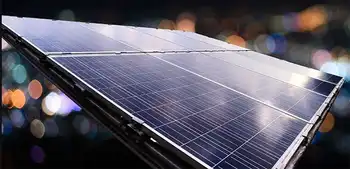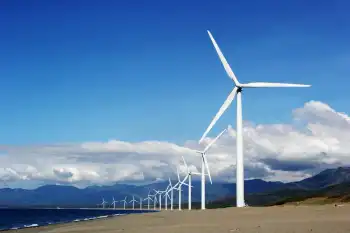New Kind of 'Solar' Cell Shows We Can Generate Electricity Even at Night

Substation Relay Protection Training
Our customized live online or in‑person group training can be delivered to your staff at your location.

- Live Online
- 12 hours Instructor-led
- Group Training Available
Thermoradiative Diode Power leverages infrared radiation and night-sky cooling to harvest waste heat. Using MCT (mercury cadmium telluride) detectors with photovoltaics, it extends renewable energy generation after sunset, exploiting radiative cooling and low-power density.
Key Points
Technology using MCT infrared diodes to turn radiative Earth-to-space heat loss into electricity, aiding solar at night.
✅ MCT diodes radiate to cold sky, generating tiny current at 20 C
✅ Complements photovoltaics by harvesting post-sunset infrared flux
✅ Potential up to one-tenth solar output with further efficiency gains
Conventional solar technology soaks up rays of incoming sunlight to bump out a voltage. Strange as it seems, some materials are capable of running in reverse, producing power as they radiate heat back into the cold night sky environment.
A team of engineers in Australia has now demonstrated the theory in action, using the kind of technology commonly found in night-vision goggles to generate power, while other research explores electricity from thin air concepts under ambient humidity.
So far, the prototype only generates a small amount of power, and is probably unlikely to become a competitive source of renewable power on its own – but coupled with existing photovoltaics technology and thermal energy into electricity approaches, it could harness the small amount of energy provided by solar cells cooling after a long, hot day's work.
"Photovoltaics, the direct conversion of sunlight into electricity, is an artificial process that humans have developed in order to convert the solar energy into power," says Phoebe Pearce, a physicist from the University of New South Wales.
"In that sense, the thermoradiative process is similar; we are diverting energy flowing in the infrared from a warm Earth into the cold Universe."
By setting atoms in any material jiggling with heat, you're forcing their electrons to generate low-energy ripples of electromagnetic radiation in the form of infrared light, a principle also explored with carbon nanotube energy harvesters in ambient conditions.
As lackluster as this electron-shimmy might be, it still has the potential to kick off a slow current of electricity. All that's needed is a one-way electron traffic signal called a diode.
Made of the right combination of elements, a diode can shuffle electrons down the street as it slowly loses its heat to a cooler environment.
In this case, the diode is made of mercury cadmium telluride (MCT). Already used in devices that detect infrared light, MCT's ability to absorb mid-and long-range infrared light and turn it into a current is well understood.
What hasn't been entirely clear is how this particular trick might be used efficiently as an actual power source.
Warmed to around 20 degrees Celsius (nearly 70 degrees Fahrenheit), one of the tested MCT photovoltaic detectors generated a power density of 2.26 milliwatts per square meter.
Granted, it's not exactly enough to boil a jug of water for your morning coffee. You'd probably need enough MCT panels to cover a few city blocks for that small task.
But that's not really the point, either, given it's still very early days in the field, and there's potential for the technology to develop significantly further in the future.
"Right now, the demonstration we have with the thermoradiative diode is relatively very low power. One of the challenges was actually detecting it," says the study's lead researcher, Ned Ekins-Daukes.
"But the theory says it is possible for this technology to ultimately produce about 1/10th of the power of a solar cell."
At those kinds of efficiencies, it might be worth the effort weaving MCT diodes into more typical photovoltaic networks alongside thin-film waste heat solutions so that they continue to top up batteries long after the Sun sets.
To be clear, the idea of using the planet's cooling as a source of low-energy radiation is one engineers have been entertaining for a while now. Different methods have seen different results, all with their own costs and benefits, with low-cost heat-to-electricity materials also advancing in parallel.
Yet by testing the limits of each and fine-tuning their abilities to soak up more of the infrared bandwidth, we can come up with a suite of technologies and thermoelectric materials capable of wringing every drop of power out of just about any kind of waste heat.
"Down the line, this technology could potentially harvest that energy and remove the need for batteries in certain devices – or help to recharge them," says Ekins-Daukes.
"That isn't something where conventional solar power would necessarily be a viable option."











